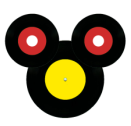- HOME
- AUDIO
- CATALOGS
- BV (Buena Vista) Series Records
- Commercial Radio Announcements
- DQ Series Records
- Little Gem Records
- Mickey Mouse Club Records
- Miscellaneous Records
- ST (Story Teller) Series Records
- STER (Stereo) Series Records
- See, Hear, and Read
- Song Records
- Souvenir Records
- Talks and Presentations
- WDL Series Records
- FAQ
- LINKS
- CONTACT
- STORE
Compose tips
- Internal paths in double quotes, written as "internal:node/99", for example, are replaced with the appropriate absolute URL or relative path. Given a site located at http://example.com/mysite, assuming clean URLs are enabled and "internal:admin/user" becomes "http://example.com/mysite/admin/user" and "internal:node/99" becomes "http://example.com/mysite/node/99". If 'node/99' has a URL alias assigned, such as 'news/latest' the alias will be substituted giving "http://example.com/mysite/news/latest".
- Web page addresses and e-mail addresses turn into links automatically.
Allowed HTML tags: <a> <em> <strong> <cite> <code> <ul> <ol> <li> <dl> <dt> <dd>
This site allows HTML content. While learning all of HTML may feel intimidating, learning how to use a very small number of the most basic HTML "tags" is very easy. This table provides examples for each tag that is enabled on this site.
For more information see W3C's HTML Specifications or use your favorite search engine to find other sites that explain HTML.
Tag Description You Type You Get Anchors are used to make links to other pages. <a href="https://www.mousevinyl.com">MouseVinyl.com</a>MouseVinyl.com Emphasized <em>Emphasized</em>Emphasized Strong <strong>Strong</strong>Strong Cited <cite>Cited</cite>Cited Coded text used to show programming source code <code>Coded</code>CodedUnordered list - use the <li> to begin each list item <ul> <li>First item</li> <li>Second item</li> </ul>- First item
- Second item
Ordered list - use the <li> to begin each list item <ol> <li>First item</li> <li>Second item</li> </ol>- First item
- Second item
Definition lists are similar to other HTML lists. <dl> begins the definition list, <dt> begins the definition term and <dd> begins the definition description. <dl> <dt>First term</dt> <dd>First definition</dd> <dt>Second term</dt> <dd>Second definition</dd> </dl>- First term
- First definition
- Second term
- Second definition
Most unusual characters can be directly entered without any problems.
If you do encounter problems, try using HTML character entities. A common example looks like & for an ampersand & character. For a full list of entities see HTML's entities page. Some of the available characters include:
Character Description You Type You Get Ampersand && Greater than >> Less than << Quotation mark "" - Lines and paragraphs are automatically recognized. The <br /> line break, <p> paragraph and </p> close paragraph tags are inserted automatically. If paragraphs are not recognized simply add a couple blank lines.
- E-Mail addresses are hidden with reCAPTCHA Mailhide.
- Get Amazon product data using [amazon ASIN selector], for example, [amazon 0399155341 thumbnail], [amazon 0399155341 full], or [amazon 0399155341 inline]. In addition, you can grab various data items from the item description using selectors like author, title, asin, isbn, ean, detailpageurl, salesrank, publisher, manufacturer, studio, label, binding, listpriceamount, listpricecurrencycode, listpriceformattedprice, lowestpriceamount, lowestpricecurrencycode, lowestpriceformattedprice, amazonpriceamount, amazonpricecurrencycode, amazonpriceformattedprice, productgroup, producttypename, invalid_asin, deweydecimalnumber, edition, numberofpages, publicationyear, type, releaseyear, publicationyear, smallimage, smallimageurl, smallimageheight, smallimagewidth, mediumimage, mediumimageurl, mediumimageheight, mediumimagewidth, largeimage, largeimageurl, largeimageheight, largeimagewidth. For example, [amazon 0596515804 title] will provide the title of the item, and [amazon 0596515804 largeimage] will be replaced with an img tag giving the large image. A complete description of filters is on the Amazon module handbook page.

